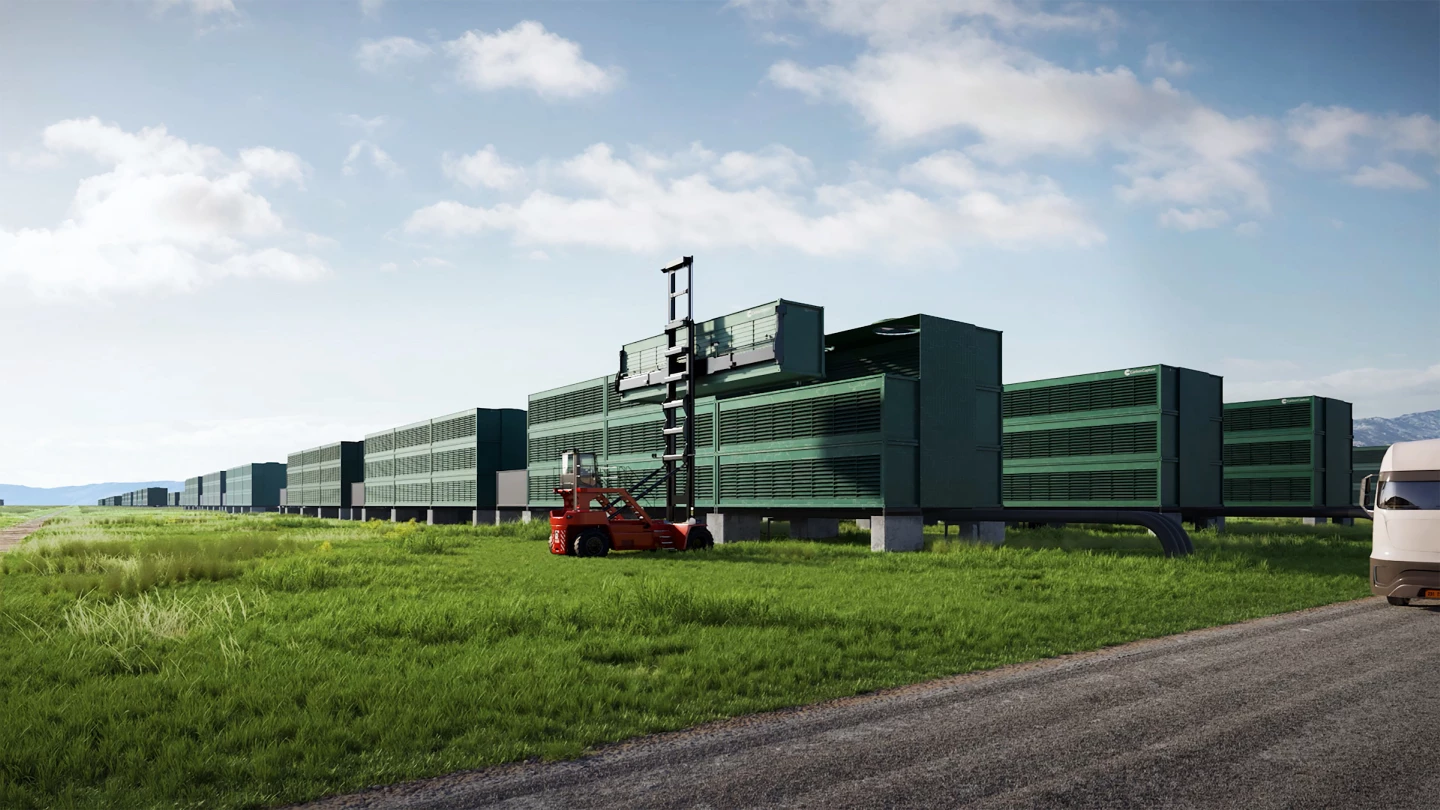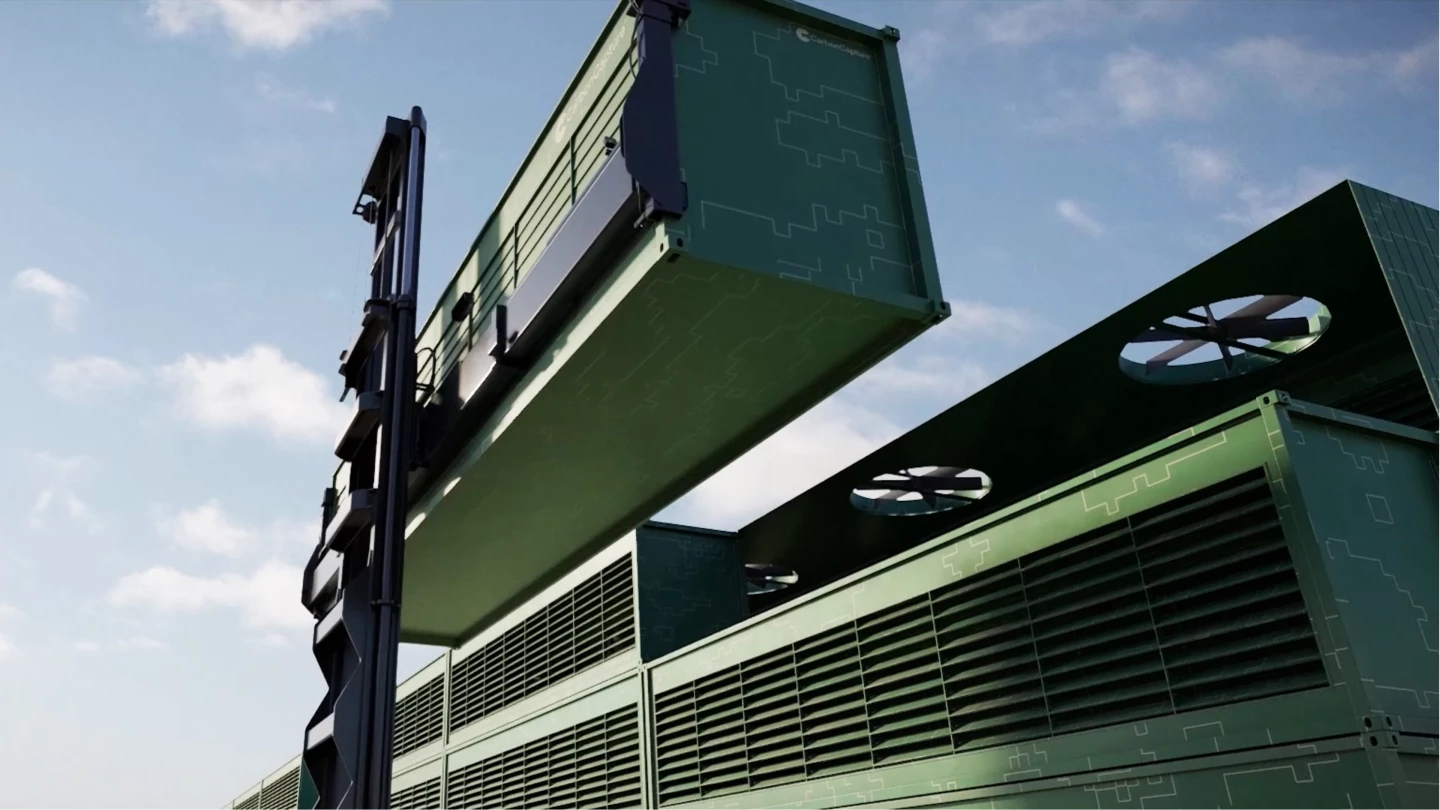The US state of Wyoming is set to welcome the world’s largest direct air capture plant for the removal of atmospheric carbon dioxide. Called Project Bison, the facility is slated to swing into action next year and, all going to plan, will scale up its operations by the end of the decade to suck up five million tons of CO2 each year, and safely lock it away underground.
Project Bison enters the fray as the first massively scalable direct air capture plant in the US, according to the company behind the technology, CarbonCapture. The LA-based outfit has teamed up with Dallas-based company Frontier Carbon Solutions on the venture, which will lock the captured carbon away underground to prevent it from re-entering the atmosphere.
The direct air capture machines will draw in atmospheric CO2 and absorb it with solid sorbents, then subject it to heat in order to turn it into concentrated CO2. This concentrated CO2 can then be mineralized in deep rock formations or permanently sequestered by other means. Alternatively, it can be palmed off to manufacturers of products that use clean CO2, such as fuels and next-generation concrete.
Project Bison follows in the footsteps of another ambitious startup in this space, Switzerland’s Climeworks. The company last year began operations at its first proper direct air capture plant, the largest in the world at the time, a facility called Orca that's capable of soaking up 4,000 tons of CO2 each year. Earlier this year, Climeworks broke ground on second, even larger plant called Mammoth, which is designed to soak up 36,000 tons of CO2 annually once operations begin in a couple of years.
Climeworks plans to ramp up its operations to reach megaton-scale CO2 removal, or millions of tons, in order to take more of a bite out of the some 30 billion tons generated by human activity each year. Key to these ambitions is a modular architecture that allows its direct air capture units to be stacked atop one another, and CarbonCapture is taking a similar approach with Project Bison.

For its part, CarbonCapture describes its system as “deeply modular.” The reactors slot into shipping-container-sized modules that can be stacked into tiers. This enables upgrades to individual reactors, for example, or for different types of plug-and-play sorbent cartridges to be slotted in to suit different climates or seasons. These modules can be grouped together in clusters to share resources like power and heat, with those clusters then able to be scaled up to form gigantic arrays.
Wyoming was chosen as the site for Project Bison owing to its ready access to renewable energy sources and friendly regulatory conditions for carbon storage. Pending approvals, it will be the first direct air capture plant to use Class IV wells for carbon sequestration, injecting it into deep saline aquifers. Phase 1 carbon capture operations are expected to begin next year, removing around 10,000 tons annually.
CarbonCapture says there are no practical limits when it comes to scaling up the project, however, and plans to do just that to remove 200,000 tons a year by 2026, one megaton a year by 2028 and then five megatons a year by 2030. At this point, it expects Project Bison to be the largest single atmospheric carbon removal project in the world.

When that time comes, it may have some competition, however. Aside from Climeworks’ efforts in this area, we’ve seen London startup Brilliant Planet outline plans to offer gigaton-scale carbon capture using algae, and Australian startup Southern Green Gas’s vision of capturing billions of tons each year. The US government is also investing billions of dollars into carbon capture, with the aim of developing regional hubs that can help drive down the considerable cost of the technology.
This is no small sticking point when it comes to making carbon capture a viable weapon in the fight against climate change, considering the size of the problem. Climeworks’ first plant captured carbon at around US$600 a ton, but it aims to do so at around $100 a ton as it scales up, while others are aiming even lower.
CarbonCapture will be betting big on the effects of the Biden government’s recently passed Inflation Reduction Act to make its carbon capture commercially viable. The act sees tax credits for carbon capture plants increase from $50 per ton to as much as $180 if the carbon is stored underground, and is designed to accelerate innovations in the carbon removal sector.
“With the passage of the Inflation Reduction Act, the proliferation of companies seeking high-quality carbon removal credits, and a disruptive low-cost technology, we now have the ingredients needed to scale DAC (direct air capture) to megaton levels by the end of this decade,” said Adrian Corless, CEO and CTO, CarbonCapture Inc. “We plan to have our first DAC modules fielded by the end of next year and to continue installing capacity as quickly as modules come off our production line. Our goal is to leverage economies of scale to offer the lowest priced DAC-based carbon removal credits in the market.”
Source: Frontier Carbon Solutions, CarbonCapture via BusinessWire







